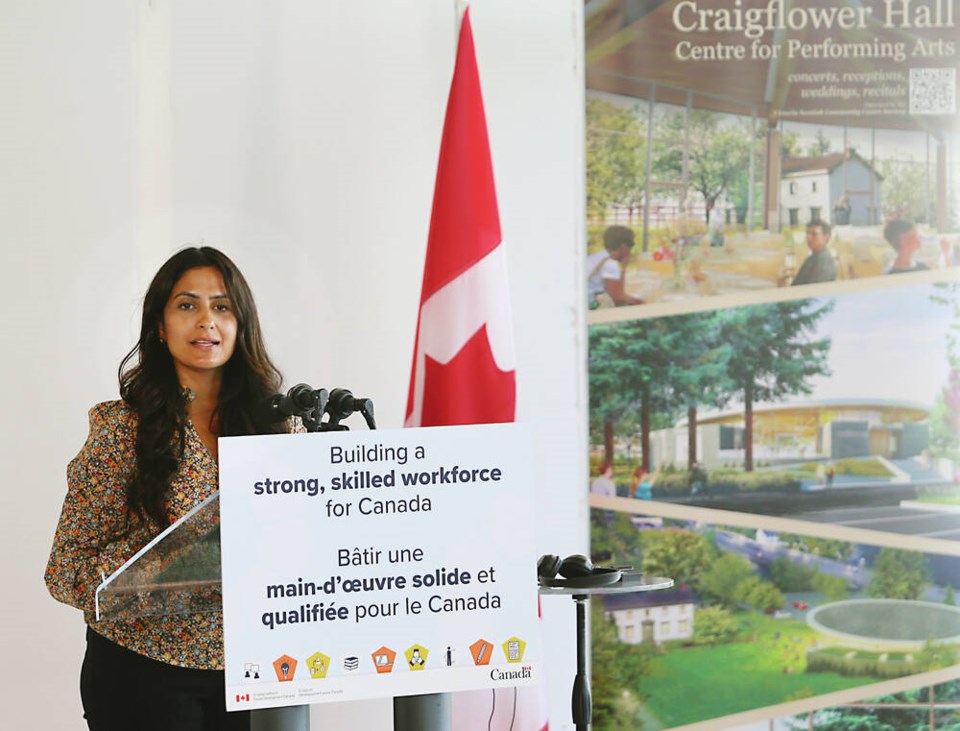The sa���ʴ�ý Construction Association hopes a large federal infusion of cash will translate into a larger and more diverse labour pool in the industry.
The $21-million grant, announced Wednesday in Victoria, which will be paid directly to contractors who participate over the next two years, is to incentivize the hiring and registering of new apprenticeships.
“This will make a difference because these dollars are going right to contractors — small- and medium-sized contractors with up to 500 employees,” said association president Chris Atchison.
In order to qualify, a contractor must demonstrate they are hiring a labourer to become an apprentice or registering someone who wants to switch trades and apprentice in another discipline.
“As soon as we’ve got proof that’s happening, the money flows to the employers,” said Atchison, noting companies can then use that money for retraining, signing bonuses or to offset other costs such as the sick pay legislation that hit several of them hard.
“This is the first time in a while that we’ve been able to give something back to employers that says to them: ‘Invest in your workforce, bring on new people. We need new people, work with us to do that, and you’ll be compensated to do it.’ ”
Participating employers will receive $5,000 for hiring or registering any worker. An additional $5,000 will be received if the worker self-reports as a woman, new Canadian, LGBTQ+, Indigenous, a person with a disability or a visible minority.
Employers can receive payments for up to two first-year apprenticeship positions per year during the two years of the drive, for a maximum of $40,000 per employer.
“Employers are dealing with rising costs, material shortages, increased taxes, mandatory sick pay, labour shortages, and late payments,” Atchison said. “It can be costly to hire and train new apprentices, and, especially in this climate, $40,000 can go a good distance to alleviating some of that cost burden.”
Atchison said the additional incentive to hire workers under-represented in an industry that is dominated by young men — it remains 95 per cent male — is a recognition of the need to diversify the workforce in a very tight labour market.
“We’re demonstrating the leadership needed to change the culture. We need to tap into a labour pool that’s currently untapped, and demonstrate to them that these jobs are worth pursuing,” he said.
The association plans to launch a promotional campaign to attract new talent to the industry.
“We’re pulling out all the stops,” Atchison said.
In a statement, federal Minister of Employment Carla Qualtrough said the country needs more skilled workers.
“It’s why we’re doubling incentives for employers who hire women, persons with disabilities and other traditionally marginalized groups — to make sure that everyone who wants to pursue a skilled trade has the chance to,” she said.
Kamal Khera, Minister of Seniors, who was in Victoria to make the announcement, said the skilled trades offer rewarding career opportunities and remain in high demand.
“The [apprenticeships] will help Canadians get valuable work experience in the skilled trades, particularly equity-deserving groups such as women, persons with disabilities, Indigenous people and racialized people,” she said.
“Today’s announcement will also support small and medium-sized enterprises that are providing these key job opportunities to first-year apprentices.”



